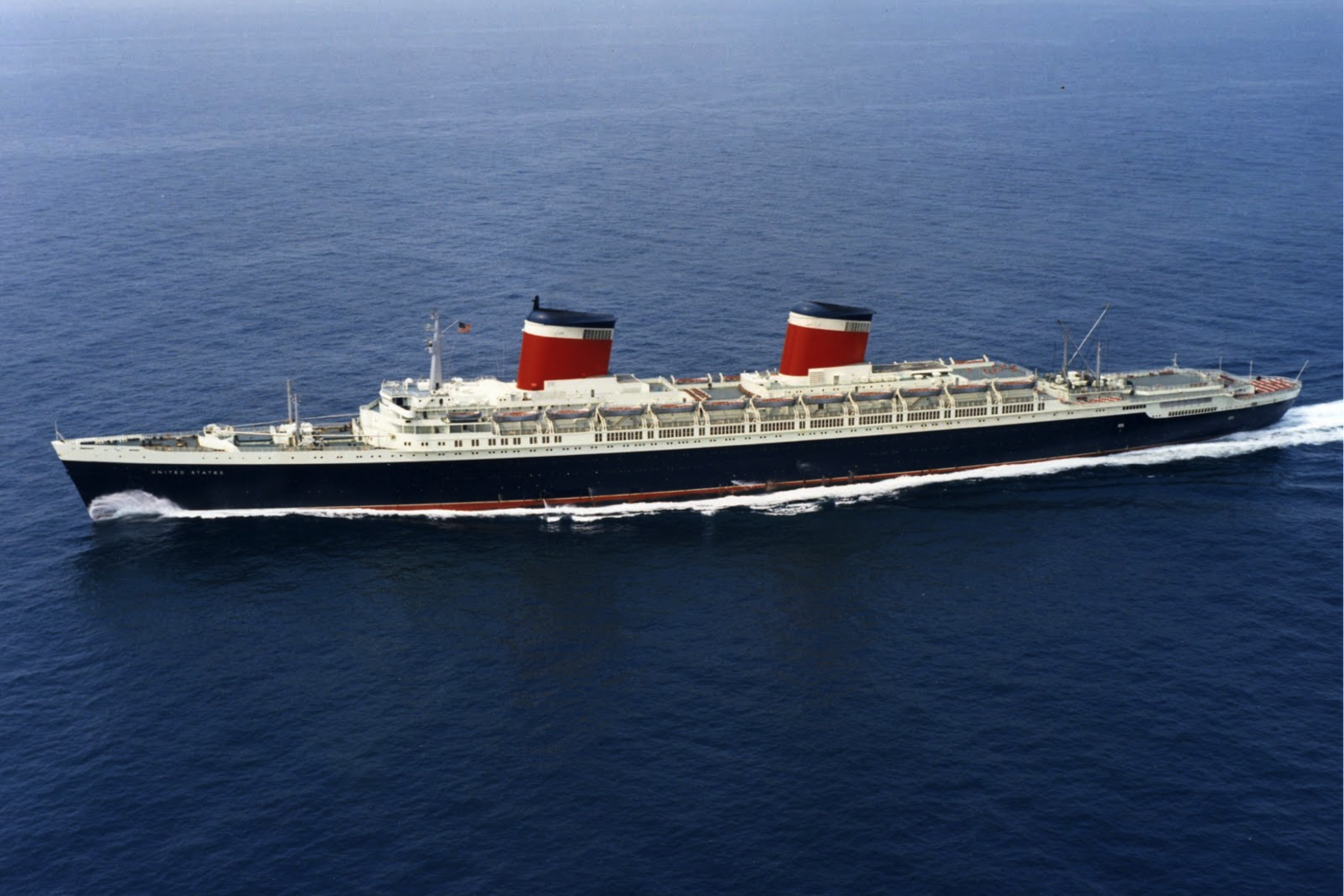Business leaders and historic preservationists have asked President Donald Trump to save "America's Flagship" from being dismantled and sunk as an artificial reef.
The coalition to save the SS United States wrote to Trump on February 10, asking him to take executive action to preserve the ship.
In the short time since the request was made, no response has been received from the Trump administration, which has been extraordinarily busy on all fronts at once.
"We are writing to you in the hope that the Executive Branch would quickly take much-needed action," the coalition wrote. "The Coalition believes that it would be far better to preserve the SSUS in her home port of NYC, afloat in Brooklyn where a berth has long been available for her, than sunk…"

The ship is now at sea, sailing from Philadelphia, where it had been idle and deteriorating for 30 years, to the Port of Mobile.
The historic ship is slated to be transitioned in Mobile to sink and become the world's largest artificial reef.
In addition to the request to the Trump administration, historic preservationists, attorneys, and citizen activists in New York, Philadelphia, Montgomery and Arizona are organizing to file suit to enjoin the dismantling and sinking of the ship. The removal of historically significant artifacts may violate historic preservation laws.
The 1950s-1960s luxury liner is expected to dock in Mobile in early March. It is scheduled to be in Mobile for the next 12 months, with 200 workers doing remediation.
If things go unchallenged, the SS United States will be transitioned into an artificial reef. That means it will be sunk in the Gulf of America, with holes cut into its hull to allow water to flow into the vessel. The ship must be re-engineered to sit upright on the Gulf floor. Notably, the SS United States was designed to not sink or catch fire, making its proposed fate as an artificial reef all the more ironic.
Concerns have been raised about the fate of the historic artifacts onboard. Plans are for the workers in Mobile to remove the remaining historically significant artifacts, including the iconic funnels, radar mast and bridge equipment, prior to the ship's sinking.
Environmental concerns have been raised about the potential impact of the ship's sinking on marine life and water quality in the Gulf.
The plan is for contractors in Mobile to remove from the ship all non-metal and materials potentially hazardous to the Gulf of America.
Okaloosa County, Florida, paid $1 million for ownership of the ship and is expected to spend about $10 million more on the conversion work in Mobile.
The plan does not sit well with community members and preservationists who want to see the ship preserved and docked where it can become a museum, historical attraction, or vibrant hub for innovation and entrepreneurship.
The SS United States Conservancy, the ship's previous owner, sold the vessel to Okaloosa County and has publicly encouraged the community to support the ship's transition to an artificial reef, calling it the "Next Chapter for America's Flagship." That chapter would be on the bottom of the Gulf.
The Conservancy failed to raise half a million dollars for the costs of preservation and relocation from its pier in Philadelphia, which had been virtually abandoned for decades.
It was built in 1950-1951 as the largest ocean liner ever constructed in the United States. On its maiden voyage, it set the transatlantic speed record using only about two-thirds of its power, and the record still stands.
One alternative plan to save the ship is similar to what has been done at the USS Alabama Battleship Park on Mobile Bay.
The New York Coalition to Save the SS United States, along with other preservation groups and community members, is fighting to prevent the ship from being dismantled and sunk. The request to President Trump is the latest effort.
The Coalition is a last-ditch effort to save the ship. Their legal arguments include that Section 106 of the National Historic Preservation Act precludes the historic vessel from being destroyed without a public hearing and consideration of alternatives.
The SS United States was built in 1950-1951 as the largest ocean liner ever constructed in the United States. It made its maiden voyage in 1952. On the maiden voyage, it set the transatlantic speed record using only about two-thirds of its power, a record that still stands.
The ship transported notables — presidents, Congress members, Hollywood stars, heads of state—as well as tourists, members of the armed forces and immigrants between New York City and Southampton, England.
Supporters of the alternative plans cite similar ships, such as the Queen Mary in Long Beach, California and the Queen Elizabeth II in Dubai, and the Rotterdam in the Netherlands. These ships have been successfully repurposed as floating hotels or tourist and historical attractions.
Research by 1819 News indicates that there are three ways that the ship could be saved and restored:
1. The Coalition or other plaintiffs could obtain a federal injunction against the dismantling and sinking.
2. The Coalition or others could negotiate with Okaloosa County to acquire the ship and preserve it.
3. The Trump administration could take executive action.
The SS United States has been recognized as a National Registered Historic Place since 1999.
This is a developing story. 1819 News will cover any action by the Trump administration or other steps to preserve the ship.
Jim' Zig' Zeigler writes about Alabama's people, places, events, groups and prominent deaths. He is a former Alabama Public Service Commissioner and State Auditor. You can reach him for comments at ZeiglerElderCare@yahoo.com.
Don't miss out! Subscribe to our newsletter and get our top stories every weekday morning.










